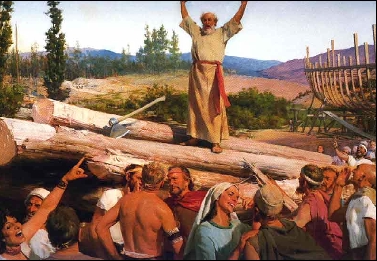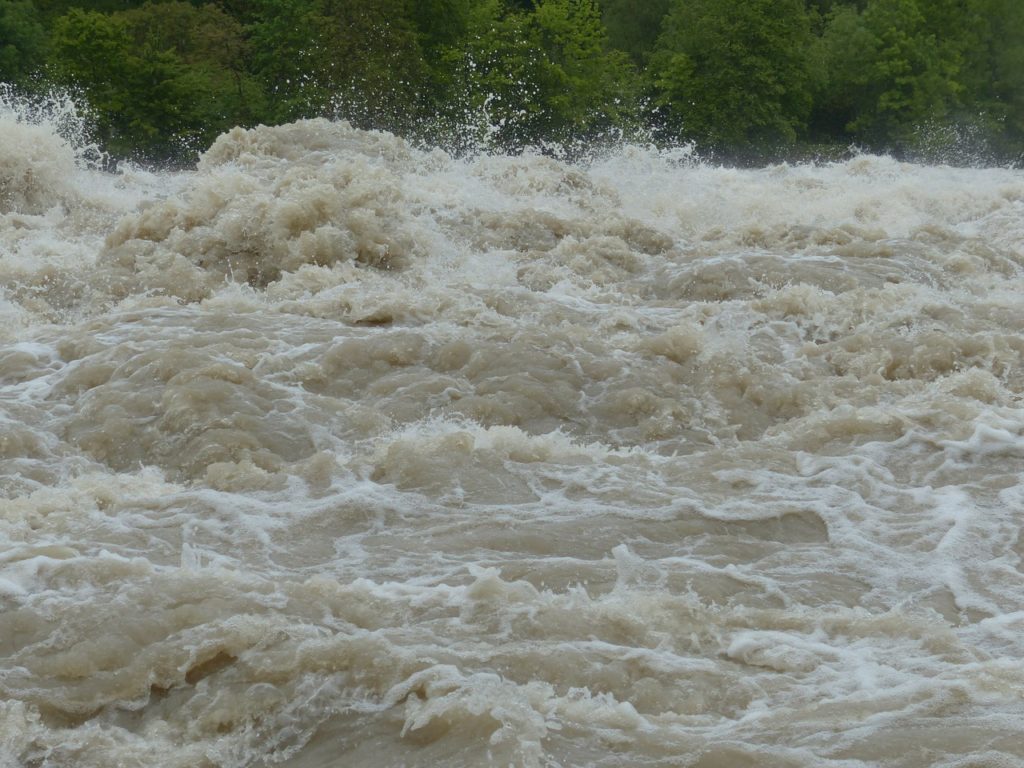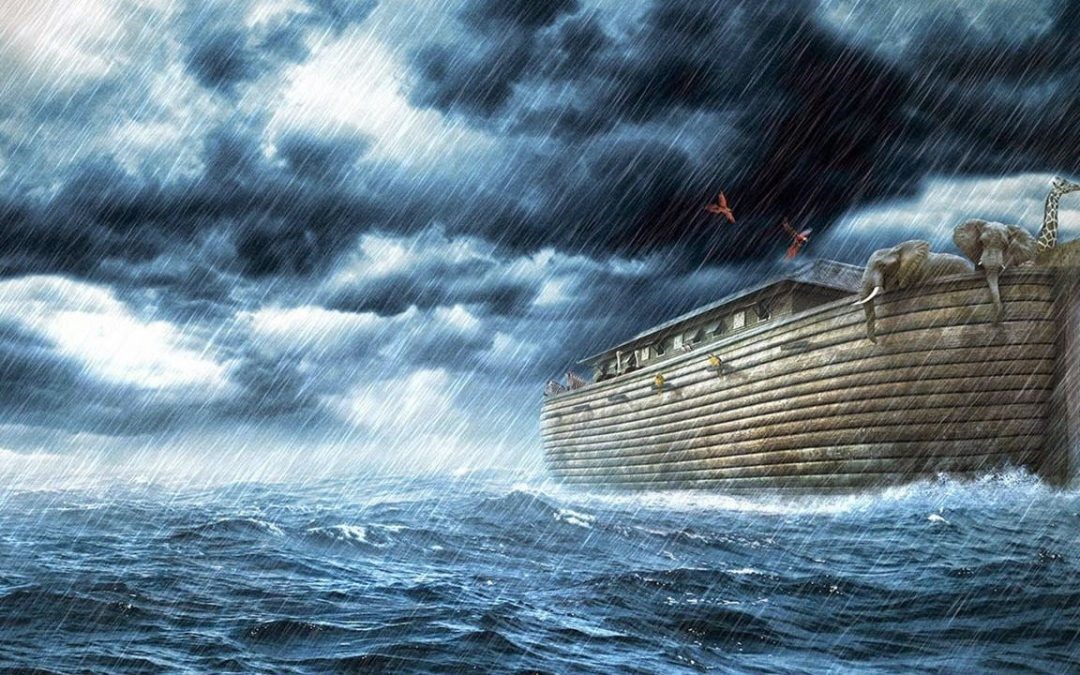The Mystery Behind the Myth of the Flood has captivated human imagination for millennia, weaving together elements of divine wrath, human survival, and natural catastrophe. This ancient tale, found in various forms across cultures, challenges us to explore the boundaries between myth and reality. From the biblical story of Noah’s Ark to ancient Mesopotamian epics, the flood narrative raises profound questions about humanity’s shared history and the forces that shape our world. In this article, we delve into the enigma, examining how science, archaeology, and cultural studies shed light on one of the most enduring stories in human civilization.
Ancient Flood Narratives in Different Cultures

The flood myth is a cornerstone of many ancient civilizations, symbolizing themes of destruction, renewal, and divine judgment. This narrative appears in diverse forms across the globe, suggesting a common human experience or perhaps a shared historical event. By examining these stories, we can uncover patterns that hint at a deeper mystery, linking disparate cultures through time and space. The Mystery Behind the Myth of the Flood becomes evident as we explore how these tales evolved, reflecting societal fears, environmental changes, and spiritual beliefs.
The Epic of Gilgamesh and Mesopotamian Flood Story

The Epic of Gilgamesh, one of the oldest known literary works, features a flood narrative that predates many others. This story centers on Utnapishtim, who is warned by the god Ea to build a boat and survive a great deluge meant to wipe out humanity.
In this account, the flood is not just a natural disaster but a deliberate act by the gods to cleanse the earth of human noise and corruption. Utnapishtim’s survival and subsequent deification highlight themes of divine favor and the cyclical nature of life. Unlike later versions, this tale emphasizes the gods’ capricious nature, portraying them as flawed beings who regret their creation. The detailed description of the boat’s construction and the flood’s aftermath provides a vivid picture of ancient Mesopotamian life, where rivers like the Tigris and Euphrates were both lifelines and sources of peril.
Archaeological evidence from sites like Ur and Nineveh supports the idea that flooding was a real threat in this region, with sediment layers indicating massive inundations. This connection between myth and environment raises intriguing questions about how oral traditions might have been inspired by actual events, such as the end of the last Ice Age or regional catastrophes. The Mystery Behind the Myth of the Flood is further deepened by the Epic’s influence on later stories, showing how cultural exchange spread these narratives across ancient Near Eastern societies.
Noah’s Ark in Judeo-Christian Tradition
In the Judeo-Christian Bible, the flood story is immortalized in the Book of Genesis, where Noah is chosen by God to build an ark and save his family and pairs of animals from a worldwide deluge. This version introduces moral undertones, with the flood serving as punishment for human wickedness and a reset for creation.
God’s covenant with Noah, marked by the rainbow, symbolizes hope and renewal, contrasting with the destructive force of the waters. The narrative’s details, such as the ark’s dimensions and the duration of the flood, have been scrutinized by scholars, revealing parallels with earlier Mesopotamian texts. This suggests a process of cultural borrowing and adaptation, where the Hebrew writers may have drawn from Babylonian sources during the Exile.
The story’s impact extends beyond scripture, influencing art, literature, and even modern environmental discussions. For instance, interpretations vary from literal historical events to allegorical lessons on sin and redemption. The Mystery Behind the Myth of the Flood lies in its ability to evolve, adapting to different theological contexts while retaining core elements like divine warning and survival. Today, debates among historians and theologians continue to explore whether the flood reflects a specific disaster, such as the flooding of the Black Sea around 5600 BCE, or a composite of multiple events encoded in memory.
Flood Myths in Greek and Roman Mythology
Greek mythology offers its own flood narrative in the story of Deucalion and Pyrrha, who, like Noah, survive a deluge sent by Zeus to punish humanity for its impiety. After the waters recede, they repopulate the earth by throwing stones that transform into people, emphasizing themes of rebirth and human origins.
This tale, found in Ovid’s Metamorphoses, blends Greek and Roman elements, showing how myths were reshaped in the classical world. Zeus’s role as a punisher mirrors other deities in flood stories, but the focus on metamorphosis adds a unique layer, symbolizing transformation and the fluidity of existence.
Comparisons with other cultures reveal striking similarities, such as the use of a boat for survival and the idea of a chosen survivor. The Mystery Behind the Myth of the Flood here involves the diffusion of ideas through trade and conquest, as Greek myths may have been influenced by Near Eastern tales. Archaeological findings, like flood deposits in the Mediterranean, lend credibility to the notion that these stories were rooted in real environmental crises, such as tsunamis or river overflows. This interconnectedness challenges us to consider how ancient societies processed and shared experiences of disaster, creating narratives that endure across millennia.
Similarities and Cultural Exchanges
Despite geographical and temporal differences, flood myths share common motifs, such as a divine warning, a hero building a vessel, and the survival of a remnant to restart civilization. This universality points to possible cultural exchanges or a collective human memory of catastrophic events.
For example, the motif of a world-covering flood appears in Hindu texts like the Matsya Purana, where Vishnu saves Manu from a deluge, and in Native American legends, such as the Ojibwe story of a great flood. These parallels suggest that ancient peoples might have encountered similar natural phenomena, like massive floods from melting ice caps or seismic activity.
Scholars debate whether these similarities arise from independent invention or diffusion through migration and trade routes. The Mystery Behind the Myth of the Flood is amplified by genetic and linguistic studies, which show how populations moved and intermingled, potentially carrying stories with them. In modern times, this shared heritage fosters a sense of global unity, reminding us that humanity’s response to disaster is a timeless thread in our cultural tapestry.
Scientific Theories Explaining the Flood Myth


The flood myth isn’t just a relic of ancient storytelling; it intersects with scientific inquiry, where researchers seek to demystify the events behind these tales. By blending geology, climatology, and anthropology, scientists propose that the Mystery Behind the Myth of the Flood may stem from real historical catastrophes. This section explores how natural phenomena could have inspired widespread narratives of global inundation, challenging us to reconcile myth with evidence-based explanations.
Geological Evidence of Ancient Floods
Geological studies reveal that massive floods have occurred throughout Earth’s history, providing a plausible basis for flood myths. For instance, the Black Sea deluge hypothesis suggests that around 5600 BCE, rising sea levels breached a natural dam, flooding vast areas and potentially displacing populations.
This event, supported by sediment cores and underwater archaeology, could have been remembered and exaggerated in oral traditions, evolving into the epic flood stories we know. In North America, the Missoula Floods during the last Ice Age carved out dramatic landscapes, such as the Channeled Scablands, which might have inspired indigenous flood legends.
The scale of these events is staggering; for example, the Missoula Flood released water volumes equivalent to ten times the flow of all current rivers combined. Such catastrophes would have left lasting impressions on survivors, who might have interpreted them through a spiritual lens. The Mystery Behind the Myth of the Flood thus emerges from the gap between scientific reconstruction and mythological embellishment, inviting us to consider how ancient witnesses processed trauma and uncertainty.
Climatic Changes and Ice Age Meltwater
The end of the last Ice Age, approximately 12,000 years ago, involved rapid climate shifts that led to significant sea-level rises, potentially flooding coastal regions and river valleys. This period of change could have triggered the ancestral memories encoded in flood myths across cultures.
Meltwater pulses, like Meltwater Pulse 1B around 11,000 years ago, raised sea levels by several meters in a short time, submerging landmasses and
Flood Myths in Global Context

The concept of a great flood has transcended individual cultures and found its way into the fabric of various world mythologies. From the ancient Near East to the Americas, flood narratives share striking similarities, indicating that these stories may stem from collective human experiences with catastrophic natural disasters. By examining different cultural interpretations of the flood myth, we uncover layers of meaning that speak to humanity’s relationship with nature, divine justice, and survival.
Common Themes Across Cultures
Flood myths across disparate cultures reveal universal themes, such as divine retribution, a chosen protagonist, and the rebirth of civilization post-catastrophe. This thematic consistency suggests that ancient societies grappled with similar existential questions and fears, aligning their experiences with cosmic narratives.
In many traditions, including the Epic of Gilgamesh, the Biblical account of Noah, and the aforementioned Deucalion narrative from Greek mythology, we encounter a motif of a singular hero or family tasked with preserving life. These figures often receive divine warnings about impending doom, emphasizing a moral dimension to the narrative. The implications are profound; they suggest that humanity is not only at the mercy of nature but also has responsibilities towards ethical living.
The symbolism associated with the flood itself often denotes purification and renewal. In the aftermath of the deluge, survivors represent a fresh start for society, freed from previous transgressions. This theme resonates deeply in religious contexts, where the flood serves as both punishment and an opportunity for redemption. The interconnectedness of these narratives reflects shared human anxieties about morality, chaos, and the hope for regeneration.
Archaeological Correlations
The archaeology surrounding ancient flood myths provides a fascinating lens through which to view these stories. Excavations in regions like Mesopotamia have uncovered evidence of significant flooding events that could have inspired local myths. For instance, sedimentary layers indicate that around 2900 BCE, catastrophic floods might have impacted the Sumerian civilization—events that would later find their way into oral traditions.
In addition to Mesopotamia, archaeological findings from the Indus Valley and Mesoamerica reveal sophisticated urban centers that faced environmental challenges, including floods. These discoveries bolster the argument that such myths arose from actual occurrences, subsequently woven into larger cosmological frameworks.
Moreover, researchers have noted parallels between the destruction of certain cities and the timing of mythological accounts. For example, the decline of the Minoan civilization on Crete around the time of a volcanic eruption and subsequent tsunami correlates with narratives in Greek mythology. Such correlations reinforce the idea that natural disasters not only shape landscapes but also culturally significant stories that endure across generations.
Linguistic Studies and Cultural Diffusion
Linguistic research has revealed that many flood myths share common roots, suggesting possible diffusion through trade routes or migrations. As communities encountered each other—whether through commerce, conquest, or exploration—they exchanged ideas, beliefs, and stories.
For example, the term “flood” in various languages can be traced back to similar phonetic roots, hinting at a shared semantic heritage. Linguists argue that the story of a great deluge may have originated in a specific geographic area and gradually spread outward as populations interacted. The Mystery Behind the Myth of the Flood thus becomes a reflection of human connection over vast distances and timescales.
This linguistic convergence raises questions about how these flood narratives evolved with localized adaptations. Each culture adapted the myth to fit its unique environmental and social context, resulting in diverse interpretations while retaining core elements. This adaptability underscores the resilience of storytelling as a means of making sense of the world, reinforcing communal identities even amidst catastrophe.
Scientific Theories Explaining the Flood Myth


The flood myth isn’t just a relic of ancient storytelling; it intersects with scientific inquiry, where researchers seek to demystify the events behind these tales. By blending geology, climatology, and anthropology, scientists propose that the Mystery Behind the Myth of the Flood may stem from real historical catastrophes. This section explores how natural phenomena could have inspired widespread narratives of global inundation, challenging us to reconcile myth with evidence-based explanations.
Geological Evidence of Ancient Floods
Geological studies reveal that massive floods have occurred throughout Earth’s history, providing a plausible basis for flood myths. For instance, the Black Sea deluge hypothesis suggests that around 5600 BCE, rising sea levels breached a natural dam, flooding vast areas and potentially displacing populations.
This event, supported by sediment cores and underwater archaeology, could have been remembered and exaggerated in oral traditions, evolving into the epic flood stories we know. In North America, the Missoula Floods during the last Ice Age carved out dramatic landscapes, such as the Channeled Scablands, which might have inspired indigenous flood legends.
The scale of these events is staggering; for example, the Missoula Flood released water volumes equivalent to ten times the flow of all current rivers combined. Such catastrophes would have left lasting impressions on survivors, who might have interpreted them through a spiritual lens. The Mystery Behind the Myth of the Flood thus emerges from the gap between scientific reconstruction and mythological embellishment, inviting us to consider how ancient witnesses processed trauma and uncertainty.
Climatic Changes and Ice Age Meltwater
The end of the last Ice Age, approximately 12,000 years ago, involved rapid climate shifts that led to significant sea-level rises, potentially flooding coastal regions and river valleys. This period of change could have triggered the ancestral memories encoded in flood myths across cultures.
Meltwater pulses, like Meltwater Pulse 1B around 11,000 years ago, raised sea levels by several meters in a short time, submerging landmasses and altering the geography known to early humans. The resulting environmental changes would have profoundly affected settlement patterns, pushing communities to either adapt or relocate.
This climatic upheaval aligns closely with the timeframe when many flood myths appear to have emerged in human history. The Mystery Behind the Myth of the Flood lies not only in the shared stories but also in the profound impacts these geological events had on human migration, resource allocation, and cultural evolution.
Anthropological Perspectives on Memory and Narrative
From an anthropological standpoint, the persistence of flood myths highlights the role of collective memory in shaping cultural identity. Communities often retain stories of significant events to pass down knowledge and cautionary tales through generations.
These narratives serve as tools for coping with trauma, societal norms, and moral lessons, reflecting the complexities of human experience. The psychological need to explain catastrophic occurrences gives rise to elaborate mythologies that resonate within the cultural consciousness.
As scholars explore the intersection between memory, narrative, and identity, the Mystery Behind the Myth of the Flood comes into sharper focus. These stories become more than mere recollections; they transform into integral components of how societies understand and narrate their pasts, embodying resilience and the struggle for survival.
Conclusion

In exploring the Mystery Behind the Myth of the Flood, we uncover a tapestry of shared human experience that transcends geographical, cultural, and temporal boundaries. Whether viewed through the lenses of religion, geology, linguistics, or anthropology, the flood narrative serves as a powerful reminder of our interconnectedness—and our innate desire to make meaning out of chaos.
Each culture, drawing upon its unique environment and societal values, has contributed to the rich mosaic of flood myths. These stories reflect not only the struggles against nature but also the deep connections humans have forged with one another and their surroundings. The enduring legacy of flood myths invites us to ponder our place within the greater narrative of existence and to recognize the timeless threads that bind us together in our efforts to survive and thrive amidst adversity.

GIPHY App Key not set. Please check settings